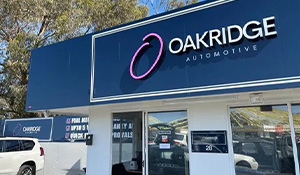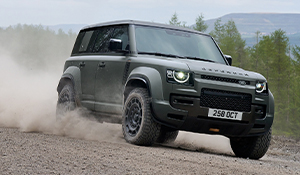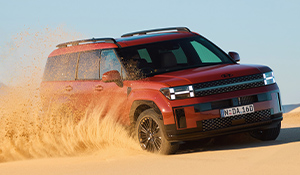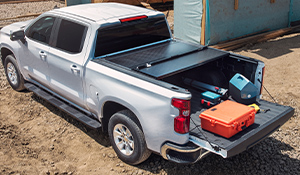ROAD TEST - AUDI Q7 160kW 3.0 TDI QUATTRO
Audi has made joining its flagship Q7 SUV club a little less expensive by adding a lower-powered 3.0-litre V6 turbo-diesel version with fewer sexy goodies.
Special Spec
Audi joined the large luxury SUV segment back in late 2006 and since then, the big German has earned a top-notch reputation and a growing band of loyal owners.
A decade on, the second-generation Q7 arrived in Australian dealer showrooms and, as well as being a remarkable 240kg lighter than its predecessor, it was way more fuel efficient and comes armed with dazzling technology, especially on the top-spec version.

Less is More?
Unlike the top-spec 3.0-litre TDI variant that was launched in this country in late 2015, under this model’s bonnet is a 160kW/500Nm version of the same engine. Maximum power is on tap from 3250rpm to 4750rpm, while peak torque arrives at a lazy 1250rpm and stays with you till 3000rpm.
This compares with the more-powerful engine’s 200kW from 3250rpm to 4750rpm and a thumping 600Nm of peak torque that is on tap from 1250rpm to 3000rpm.
While sales of all the diesel-powered vehicles in the Volkswagen family (including Audi) continue to be impacted by the group’s much-publicised “dieselgate” scandal, it’s worth recapping VW’s official position on the 3.0-litre TDI engines.
In a media statement issued at the height of revelations surrounding the corporate mischief, the company said it: “…. wishes to emphasise that no software has been installed in the 3-litre V6 diesel power units to alter emissions characteristics in a forbidden manner.”

Less is Enough
While I’m a dead-set torque junkie and would rather have 600Nm than 500Nm, I’ve always said that anything with 500Nm or more will always impress me and this Q7 variant is no exception.
There’s no doubt you can sense that the 160kW Q7 doesn’t have the sprinting-to-100km/h prowess of its more powerful sibling, nor the overtaking power, but it can still match or outpunch anything in the large diesel SUV segment.
Audi claims a combined fuel-consumption figure of just 5.8lt/100km, but during my week with the test car, it came in at 7.9 litres.
Both versions’ engines are mated with an eight-speed automatic transmission and there are steering-wheel-mounted paddles to add to the driving fun.
Drivers can dial up their choice of modes from the so-called “drive-select” system and included is “efficiency” that helps the driver adopt an economical driving style.
Also on the menu are “comfort”, which is just the thing for highway cruising, “auto” that Audi explains combines an overall impression of comfort with a more dynamic ride and “dynamic” – a mode that tightens settings for the performance driver.
Sprint the 2135kg seven-seater to 100km/h and it will stop the clock at a pretty respectable 7.3 seconds. This compares with 6.5 seconds for its 200kW/600Nm sibling.
With a 3.5 tonne braked towing capacity – not to mention its 500Nm -- the new Q7 has no trouble pulling a fully-laden horse float, big boat or caravan. But if you want to do some towing, you’ll need the optional Audi tow bar that comes with a tongue and wiring, which means you’re looking at an extra $1,900.

Adding Up
Like its 200kW sibling, the 160kW version of the Q7 rides on 19-inch alloy wheels, but of a different design, with both variants using the excellent Pirelli Scorpion Verde rubber.
Unfortunately for anyone who wants to venture onto the rough stuff in this big Audi, there is no spare, just a next-to-useless “tyre-repair kit”.
The company warns in the owner’s manual that the system must not be used for cuts and punctures larger than 4mm, if the wheel itself has been damaged or if you’ve been driving with very low pressure or on a completely flat tyre.
The entry-level Q7 is priced from $96,300 – a hefty $7,600 cheaper than its top-spec sibling – thanks to the deletion of things like the virtual cockpit display, 360-degree parking camera and all-painted lower body trim that’s standard on the 200kW version.
Standard kit highlights include: –
- Driver-information system with a 7.0-inch high-res colour display
- Side-assist with pre-sense rear, rear cross-traffic alert and exit warning
- Xenon-plus headlights with high-beam assist
- Parking-system plus with a rear-vision camera
- Electrically adjustable front seats with memory and lumbar support for the driver
- Contrasting lower bumpers
- Audi’s MMI Navigation-plus system with an eight-inch retractable display
- DAB+ digital radio
- Leather-appointed upholstery.

But if you add a selection of Audi’s pretty expensive options, you can blow the savings differential right out of the water. In the case of the test car, it came with $2,400 worth of metallic paint, the Audi Connect system ($750) and the excellent, if wallet-bruising, $4,075 assistance package with adaptive cruise control and active lane assist.
Also included was the Audi pre-sense frontal system with autonomous emergency braking, traffic-jam assist, collision assist and turn assist, the parking-assistance package with its top-view 360-degree camera and park assist ($1,300), $2,800 in LED headlights, full-body paint finish ($1,300) and fancier interior trim inlays at $1,690.
The upshot of all these add-ons was a price tag of $110,615 for our test car -- and that’s without dealer and statutory charges.
You can really knock your bank balance around if you also specify the amazing 1920 watt, 23-speaker, 23-channel amplifier Bang and Olufsen audio system with its $14,850 price tag.

Safe and Special
The Q7 is a hugely safe vehicle, coming as it does with five-star safety ratings from both ANCAP and EuroNCAP.
Standard safety kit includes eight airbags (with curtain bags for all three seating rows), ABS brakes with EBD, stability-and-traction control, anti-slip regulation and an electronic diff lock.
Like all Audi vehicles – especially the higher-spec and higher-priced ones – being inside the Q7 is a classy experience.
The leather-appointed front seats are excellent with loads of bolstering in all the right places. They are electrically adjustable with the driver’s side being blessed with electric lumbar support and a memory function.
Second-row passengers also have their fair share of comfort and because the Q7 is such a big vehicle, there is plenty of space for even the longest legs and size-12 feet.
For great cabin flexibility, the second-row seat-backs have a 35/30/35 split and even with these seats occupied, there is 770 litres of luggage space. Put kids in the third-row pews and there’s still a reasonable 295 litres.
Drop the second and third-row seat-backs and the Q7 is transformed into something of a delivery van with 1955 litres of cargo space.
Somewhat unusually for big SUVs, the sixth-and-seventh seats in the third-row are electrically adjustable and have a 50/50 split-fold arrangement. Sensibly, Audi engineers have given the seats a choice of two controls – one on the C-pillar and the other in the boot.

Storage for other smaller items is also well catered for with two cup holders for each of the three seating rows, bottle-friendly door pockets in all doors, a good-sized glovebox, a shallow open centre-console tray and a small bin beneath the front-centre armrest.
The dash and door trims combine nice soft plastic, burr-walnut-look and piano-black trim that are contrasted by the subtle use of brushed-chrome highlights.
The overall interior styling continues Audi’s reputation as the industry masters in this area and while the 160kW version doesn’t come with the 200kW version’s technically impressive virtual dash, I for one am the old-fashioned type and actually prefer the test car’s normal dash.
In the technology department, there is a retractable 8.0-inch colour centre screen that handles satnav and DAB+ digital radio duties, a second 7.0-inch information screen, rear-collision sensing, a reversing camera with guide markers, adaptive cruise control and rear cross-traffic alert and exit warning.

On and Off
Out on the road, the new Q7 is, as you’d expect, a class act, blessed as it is with impressive on-road refinement and great driving dynamics.
Needless to say, punt the big SUV with enthusiasm on gravel roads and the poise, traction, overall stability and feeling of behind-the-wheel control are second to none. This is topped off by beautifully weighted electro-mechanical power-assisted steering.
Optional all-wheel steering (a $2,775 upgrade) adds another level of on-road control, while adaptive air suspension comes at a further $4,950 premium, but its usefulness off-road is debatable. While it can increase both ground clearance and fording depth, similar air systems fitted to Mercedes SUVs have proven to be less “adaptable” to constantly changing off-road conditions than conventional suspension.
Ground clearance of 210mm and hill-descent control -- and of course the quattro AWD system -- certainly help in rougher going, even if the lack of a spare and that waste-of-space “tyre-repair kit” don’t.

Expanding the Range
If you want to get really serious about owning a Q7, forget the 160kW and the 200kW TDI. The range-topping SQ7 that was released late last year features a 4.0lt twin-turbo V8 diesel with 320kW and a monumental 900Nm on tap - just the thing for towing broken-down B-Doubles up the Hume Highway in comfort and style. But you’ll pay over $150,000 for the privilege.
Wait a year or so and you could likely get your hands on the coupe-style Q8 that was unveiled in concept form this past January, with a production version expected here in 2018. About the same size as the Q7, the Q8 will reportedly pair the 3.0lt V6 with an electric motor for 330kW and 700Nm and fuel economy of just 2.3lt/100km, while also featuring tech upgrades that’ll make their Audi debut in the new S8 saloon later this year.
In adding the 160kW Q7 and the SQ7 to their large SUV family, Audi have ensured they’re catering for those who want “more,” as well as those that are satisfied with “less”. For those people lucky enough to be in the luxury SUV market at all, the 160kW Q7 should be enough; for me, it was plenty.

AUDI Q7 160kW 3.0 TDI quattro
ENGINE: 3.0lt TDI common rail turbodiesel V6
MAX POWER: 160kW @ 3,250-4,750rpm
MAX TORQUE: 500Nm @ 1,250-3,000rpm
TRANSMISSION: 8-speed tiptronic automatic
DRIVE: quattro permanent AWD
CONSUMPTION – COMBINED CYCLE: 5.8lt/100km
FRONT SUSPENSION: Independent five link w/transverse link and anti-roll bar
REAR SUSPENSION: Independent five-link w/rear track rod and anti-roll bar
STEERING: Electromechanical R&P w/power assist
WHEELS: 19-inch Fr/Rr
TYRES: 255/55 R19
SPARE WHEEL: No
BRAKES: Ventilated disc Fr/Rr
SEATING CAPACITY: 7
LxWxH: 5052mm x 1968mm x 1741mm
WHEELBASE: 2994mm
GROUND CLEARANCE: 210mm
WADING DEPTH: 500mm
APPROACH/DEPARTURE/BREAKOVER ANGLE: 23.1/14.4/N/A degrees
FUEL CAPACITY: 85lt
KERB WEIGHT: 2135kg
CARGO CAPACITY: 1955lt max
TOW CAPACITY: 3500kg braked
GVM: 2940kg
SAFETY RATING: ANCAP 5-Star
PRICE: $96,300 + ORCs
WARRANTY: 3yr/unlimited km
<a href="www.audi.com.au">audi.com.au</a>
Words: Ian Crawford
Photos: Audi Australia and Ian Crawford

























